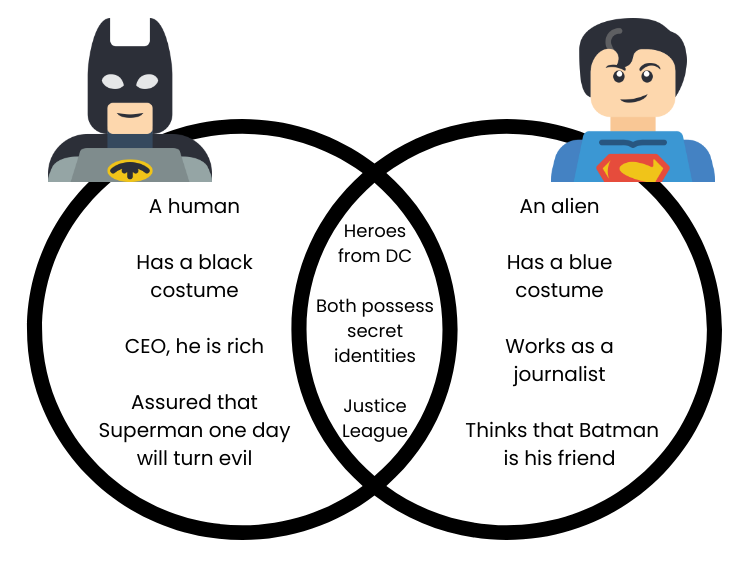During their school years, students may not always have the opportunity to select a topic for their essay or research paper. Instructors tend to assign one or offer a list of ideas that might not seem engaging. Moreover, even the topic that you choose yourself can sometimes end up being less interesting than you anticipated.
What should you do in such cases? Even if you manage to avoid these dreary topics in school and college, you might encounter them as interns or employees. What can be more tedious than writing a paper on an idea that seems boring to you?
We have a solution! In this article, our experts collected tips on how to write about a topic you’re not interested in. Here, you’ll learn how to elaborate on engaging texts on any issue in no time. You’ll also discover ways to trick yourself into feeling inspired, even if it’s about a subject you might not be very enthusiastic about. Find your motivation on this page!
💤 Why Is the Topic Boring to You?
The solution to each problem begins with awareness. Perhaps the topic seems boring to you. Maybe there are additional factors that affect your enthusiasm about the subject. This section will analyze what issue might prevent you from writing a paper on a given topic. Plus, we will provide solutions to these problems.
The following reasons may prevent you from working on a topic:
An unfamiliar subject
Having little to no knowledge about a subject may be hard for people who are used to writing unique and personal pieces. Writing a paper on an unfamiliar topic can also be difficult for those who like to get creative with their task.
So, what should you do in this case?
- Don’t pretend to be interested in the topic. Readers will sense your insincerity immediately.
- Think about why you don’t know or care about the topic. That way, you can develop more meaningful conclusions that will help you and the reader see the issue differently.
- Consider changing your research tactics. Don’t limit yourself to dry facts when searching for material for the paper. Try to look for little known facts related to the topic as well.
An overused topic
Almost every topic you choose has been written about by someone else, but there’s no need to stress. There’s always a way to make your work unique and exciting:
Include some of your own experiences. However, try to mention yourself as indirectly as possible, and only when it makes sense. Then, just start writing. Inspiration and ideas will come to you in the process.
An undefined audience
You’ll probably become bored if you’re writing to an imaginary audience. Define who your readers will be and what they need to learn from your paper. That will help you avoid the mistake of picking a random topic that won’t provide any valuable material.
When you write academically, make sure that your work is intended for someone who hasn’t found the information they need about the chosen topic in any of the available articles. Don’t rewrite those articles. Focus your paper on answering the questions you still have after reading the texts by other authors.
Exhaustion
If you are a student, the chances of being exhausted by other classes and assignments are very high. Do you have a million deadlines? Is it hard for you to write on any topic at all? Is it difficult for you to get out of bed in the morning? In that case, you are probably just too tired.
Prolonged fatigue can cause severe psychological issues in the long run. If writing becomes too challenging, we recommend that you contact a specialist. You’ll need more than just our advice to help in critical situations.
However, if this is just a case of fatigue due to stress, you can try the following:
- Eat a healthy, balanced diet. Ensure that you’re getting enough nutrients by eating fresh vegetables, fruits, and other whole foods.
- Exercise more. Regular exercises boost your energy levels.
- Drink more water. Dehydration can lead to fatigue.
- Low caffeine intake. Initially, caffeine increases your energy, but you might feel more tired as it wears off.
Writer’s block
Difficulties can arise not only because of a challenging topic but also because of a creative crisis.
Is it tricky for you to write on any topic, even if you have energy and time? Do you procrastinate composing an essay until the last minute? Do you feel that you don’t have any inspiration at all? If so, then you probably have writer’s block.
Here’s what you can do to overcome it:
- Take a long walk. If you’re stressed, it might be hard to sit still and write. Taking a long walk to relax can help calm down your brain.
- Just write. Purposefully write anything that comes to your mind, even if it is complete nonsense. Eventually, some useful ideas will arise. As an alternative, get a random topic generator and kickstart your creative flow by exploring possible topic variations to write about.
- Get help from a friend. Narrow your audience down to one person. Think about how you would describe the topic to them and start writing.
- Sleep. Sometimes the creative process benefits from several hours of good sleep. If you feel like your writing prompts to suffer, take a nap.
- Write something else. Shift your attention from one paper to another. Work on another text or edit someone else’s document to help restart your creative process.
💯 Dealing with an Uninteresting Topic: Top Tips
By this point, you’ve learned about the psychological issues that can lead to your inability to write. Yet, you might still feel unwilling to start your academic paper. Fair enough. Sometimes, the critical issue with the assigned topic is just your disinterest in the subject.
In other words, how can you write a good paper if you lack interest in the subject? We’ve gathered useful tips to answer that question in the sections below. Our recommendations can be divided into psychological and practical tricks, but we’ll start by talking about self-discipline. After all, that’s the first step towards success.
Self-Discipline
Discipline is the foundation of fruitful work. Have you struggled with developing self-control skills before? Then this section is for you. Learn how to become a disciplined person, handle your assignments, and follow up with the deadlines.
First and foremost, self-discipline helps us to be confident and persistent. Most importantly, it makes you concentrate on any task. That’s why you need it to work on a topic you find uninteresting. To master self-discipline, try the following:
Step 1: Create a study area
- Why?
A quiet and neat study area is an essential element for concentration. Having all the necessary things within your reach will prevent you from distractions. Thus, it’ll be more manageable to stay focused on the task.
- How?
Chose a calm and comfortable place and set everything you need to complete an assignment. Ensure there is enough light, the chair is comfortable, and the desk is free of unnecessary stuff. Also, keep in mind that you need fresh air to keep your brain working—don’t forget to open the window from time to time.
Step 2: Remove all the Distractions
- Why?
Distractions like a smartphone or social media are tempting even when you are completing a fascinating task. Can you imagine how alluring they are when you are working on a boring assignment?
- How?
Put your smartphone on a mute mode and ask your family or roommates not to enter your study space. Is it too difficult for you not to scroll through your social media profiles every 20 minutes? Download a Self Control app, and it will block you from visiting distraction websites for a set period.
Step 3: Write a schedule
- Why?
Time management is crucial when it comes to self-discipline. A well-developed schedule will help you stay focused on your tasks and complete them by the deadline.
- How?
You can do it in two ways: create a schedule on paper or download a planning app. A paper schedule is an excellent choice if you prefer to manually visualize your tasks, make highlights, cross the completed points out, etc. An app is a perfect option for those who want to receive reminders.
Step 4: Plan your breaks (and take them!)
- Why?
To keep their brain productive, a student has to take breaks and refresh their mind. Short pauses will help you stay focused on your task and be creative.
- How?
While creating a schedule, plan to devote some time to relax. Take several short pauses (10-15 minutes) and spend them with leisure. For example, chat with your friend, have a cup of your favorite drink, or exercise. If the assignment is too time-consuming, take a long break. Go for a walk, to a gym, or to a coffee shop.
Step 5: Employ technology
- Why?
The 21st century offers a variety of apps and gadgets for making the working process more comfortable. Why wouldn’t you take maximum advantage of it?
- How?
Explore the Internet – it is full of time-tracking, project management, and communication tools. Select the most useful websites for you, and enjoy the smooth work!
Psychological Tricks
Sometimes, to get a boring assignment done, it’s enough just to trick your brain. Sounds impressive, right? Wondering how to do that? Check our advice below:
1. Get the right headspace
Perceive a tedious task as a chance to learn something new. Nothing can be better than expanding your horizons and self-developing. Who knows, maybe knowledge gained during this boring assignment will be useful in the future.
2. Just start your research
Taking a start is always challenging, especially if you are not excited about the topic. However, as soon as you overcome it and begin to research, the work will go with the flow.
And a pleasant bonus!
Here is an effective technique to help you start: set the timer for 5 or 20 minutes and research or write for this short period. In this case, you’ll get some job done, and it will be easier to return to the assignment. Or maybe you will get carried away with the process and continue even after the time set for research has passed. You can also look at some academic writing examples on the same topic that will both inspire you and become a source of extra information.
3. Imagine your reader
Keep in mind that you are not writing your diary—you are composing a paper for a reader. Something that may seem useless to you can be of great significance to your audience. So, you may be contributing to society while making your readers familiar with your topic.
4. Pretend to be someone else
As soon as you start writing as another person, the process will become fascinating. It allows you to see the problem from different perspectives and develop your imagination.
There are three options for this trick:
- Imagine you are writing for a popular magazine or newspaper. Yes, pretend to be a famous critic and demonstrate your skills. You will get motivated if you imagine how your name and photo appear on The New York Times pages!
- Imagine you are getting ready for a presentation. What if you are a successful businessman who has to present the company from the best side? The preparation might be too tricky, but you are responsible for your success.
- Imagine you are going to participate in debates. It’s time for a heated discussion! Imagine yourself an advocate and try to take the opposite side of the argument. Maybe once you perceive the topic from a new perspective, it will become engaging for you.
5. Find something personal or engaging
Is there at least something in your topic you are passionate about? Start exploring that point. You may get so caught up in the process that you won’t notice how you composed the rest of the paper. Don’t be afraid to start with a counterargument—it can even be fun and engaging!
6. Get an interview or read one
Even if you don’t need to conduct an interview, do it. Talk with someone passionate about your topic. Firstly, you will get a lot of valuable insights. Secondly, you may become interested in the subject as well. Passion is contagious!
Practical Methods
Implementing psychological tricks may not be enough. That’s okay: we can offer you more useful advice. In this section, we move on to the practical methods that will help you start your assignment.
- Brainstorming. To begin your task, brainstorm. Come up with numerous ideas, writing down everything related to the given topic. Then, pick the best ones and use them for your assignment. This trick helps to develop your interest and might push you to the action.
- Different angle. Conduct thorough research and consider the issue from various perspectives. You can find “hidden gems”: unusual facts or unexpected connections that will make you see the topic differently. Thus, you can find an intriguing viewpoint to explore and change your attitude towards the task.
- Outline. Start your paper by developing its structure first. Put your ideas in a fixed order so that your argumentation seems logical and coherent. Add some evidence and examples, and you will see that your paper is almost done!
- Random word generator. It may seem weird, but this tool is handy for writing assignments. Click the button and get several terms and expressions that correspond to your topic. The random word generator helps develop critical thinking and can add a playful tone to tedious work.
- Storytelling. If you are allowed to be creative with your assignment, you can turn your simple essay into a story. There are a couple of obvious advantages. Firstly, the reader likes reading fascinating stories more than just dry facts. Secondly, you will be more engaged in the writing process if there is a space for creativity.
You can rely on the following storytelling techniques:
STAR Technique
This method is excellent for dynamic storytelling. It provides a structure for a story that you can depend on in your paper. It goes as follows:
Story Spine
This method is straightforward yet effective. It offers linear narration that helps the reader to comprehend the story better. To employ this technique, follow this structure:
- Once upon a time, …
- Every day, …
- One day, …
- Because of that, …
- Because of that, …
- Until finally, …
Mountain
Use this method if your story has a very emotional moment – a climax. Imagine you are climbing a mountain. The closer to the top you get, the more tension arises. Finally, there must be an entertaining climax. Then, you go down from the mountain. The tension is relieved, and all the logical conclusions are made.

Petal Structure
Imagine a blooming flower with its beautiful petals connected to the center. And now, use your fantasy and think about how this example may be associated with a storytelling technique.
Petal Structure is a perfect option for those who have a complex story consisting of numerous elements. It disregards the linear narration and demonstrates the interconnection of certain aspects. Get creative and find the most unexpected ways to draw connections between the story elements.
In Medias Res
Such an unclear technique will become evident if you translate its name from Latin: into the middle of things. Basically, you need to put your reader in the middle of the action and then go back in time and describe the previous events.
This method is prevalent among writers and directors since it keeps the audience intrigued from the beginning. Why don’t you practice your creative writing skills and employ this technique for your assignment?
🤯 Essential Brainstorming Techniques
To write a compelling and engaging paper, you have to develop numerous ideas and pick only your writing’s best ones. However, coming up with something new is always a challenge.
So what can be done? Use our brainstorming techniques. Here, we will present the most successful ones that will significantly simplify your work:
Venn Diagrams
When writing a paper, the information you use, preferably, should be visibly organized, especially if you want to compare multiple ideas. Venn Diagrams are regularly used to illustrate the different concepts and relationships between them. The circles present distinct features or ideas, while the circles’ overlap indicates common aspects.
Example:
You were assigned to write a paper in which you compare two popular superheroes, Batman and Superman.

Mind-Mapping
One of the most effective brainstorming techniques is mind-mapping. Mind mapping illustrates our ideas. It starts with a focus on the main topic of the paper. Then, you create branches and associate ideas with your central concept.
Example:
Discuss the advantages and disadvantages of mobile phones.
Cubing
Like with any other brainstorming sessions, in cubing, you start with the main topic. Then, you examine it from six different perspectives. It’s mostly asking a bunch of right questions.
Example:
You were assigned to write a paper about cats
Freewriting
It is the activity in which a person writes anything they think. Try the following: just for 10 minutes, write the flow of your thoughts on the given topic and ignore the content’s quality. Don’t stop and note even the craziest ideas that come to your mind. You will see how fascinating and multifaceted your topic is, and the writing process will become smoother.
However, some people are not in favor of the technique, as the writing becomes disorganized, and it gets hard to follow. If you are not a fan of freewriting, you can try listing. It’s almost the same method, but you’re writing down not in full sentences and ideas, but a list of them.
For example:
- Write a paper about Christmas in your country.
- Start by writing as much as you can about the topic.
- Include all the supporting facts, associations, vivid imagery, so on.
- When you run out of ideas, reread your text, and highlight the main ideas.
- Base your paper on the best concepts from the freewriting session.
That’s it!
Thanks for reading! We hope that you will not have problems writing any work, even on the most uninteresting topic. Share this page with others who may find it useful. Do you have your way of dealing with boring tasks? Tell us in the comments below!
🔗 References
- Brainstorming: The Writing Center, the University of North Carolina at Chapel Hill
- Brainstorming Techniques for Students: Grace Fleming, ThoughtCo
- Using Writing Bursts to Generate Ideas and Enthusiasm: Ali Hale, Daily Writing Tips
- 6 Ways to Become a More Self-disciplined Student: Lisa Daraskevich, Wellness Blog, Winona State University
- Time Management Tips: Academic Skills Center, Dartmouth College
- Mastering Time Management for College Students: Purdue University Global
- Storytelling in Teaching and Learning: New York University
- How to Outline…by Outlining: Student Learning Center, Berkeley University
- 10 Steps of the Research Process: Trocaire College
- Writer’s Block: Academic Guides at Walden University
- Tips for Preventing Student Burnout: Florida National University




![How to Stop Corruption Essay: Guide & Topics [+4 Samples]](https://custom-writing.org/blog/wp-content/uploads/2020/12/close-up-two-hands-while-paying-money-284x153.jpeg)


![Why I Want to be a Pharmacist Essay Topics & How to Write [2026]](https://custom-writing.org/blog/wp-content/uploads/2020/12/cut-out-medicament-drug-doctor-medical-1-284x153.jpg)


![Dengue Fever 5-Paragraph Essay: How to Write [2026 Update]](https://custom-writing.org/blog/wp-content/uploads/2020/12/scientist-hand-is-holding-test-plate-284x153.jpg)
